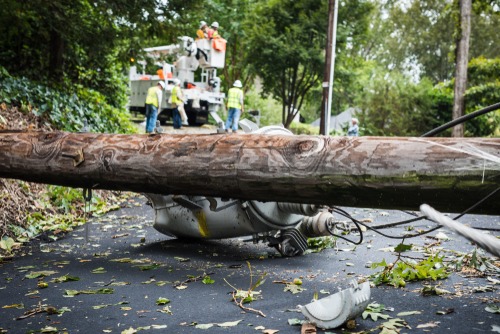Met-Ed conducts storm preparedness drill at its Pennsylvania headquarters

Met-Ed, an electric company that serves eastern and southern Pennsylvania, wrapped up its annual emergency preparation drill focused on testing its storm restoration process.
The hypothetical scenario focused on severe thunderstorms in eastern Pennsylvania, which spawned a powerful tornado with 170 mph winds that touched down in Berks County. The hypothetical tornado toppled trees, snapped utility poles, closed roads, and disrupted power to thousands of customers. Approximately 30 Met-Ed employees participated in the four-hour drill, coming from the Operations, Engineering, Safety, Logistics, Communications, External Affairs, Customer Support, Facilities, Corporate Support, and Planning and Analysis groups.
“This is a great opportunity for us to practice and sharpen our skills in preparation for severe weather as we head into the winter storm season,” Linda Moss, regional president of Met-Ed, said. “Periodic emergency drills are another way we invest in reliability for our customers, in addition to tree trimming and the continuous work we do to harden our electric system and enhance its resiliency.”
The primary objectives of the drill were to provide training to employees who are new to their storm roles and a platform for immediate feedback to refine and improve storm restoration processes. The drill also sought to Identify operational gaps in the storm restoration processes and devise solutions to proactively correct them.
In the exercise, Met-Ed used its Incident Command System (ICS) — a nationally recognized emergency management process used by all levels of government as well as non-governmental organizations and the private sector to coordinate the response to major storms or disasters.
The in-person drill – which followed COVID-19 protocols — was conducted in a spacious auditorium at Met-Ed’s Reading headquarters.
Met-Ed – owned by FirstEnergy — serves approximately 580,000 customers within 3,300 square miles of eastern and southeastern Pennsylvania.
